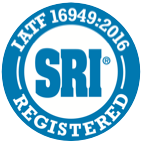Rules of Thumb for Manufacturing with Powdered or Sintered Metal
As sintered or powdered metal (PM) components become more common in automotive, consumers goods, and other manufacturing sectors, it is important for both engineers and buyers to be familiar with certain guidelines for designing these parts effectively.
Through our courses on PM best practices and other engagement in the market, the team here at Atlas Pressed Metals has had the opportunity to hear questions and challenges from people across multiple industries. Over time we’ve put together a list of some rules of thumb to keep in mind during the initial design phase and throughout the process of developing PM components. While many of our parts are made from iron (or steel, stainless steel, brass or bronze), our rules are not “ironclad.” They are a starting point.
These rules of thumb come into play after we have spent a significant amount of time understanding the customer’s application, vetting it for appropriateness for PM, and selecting the correct material. We recommend that anyone working with PM components take time to understand these guidelines before moving forward, because they address questions that frequently come up, and at Atlas, we like to be as straightforward as possible about what we can and can’t do to accommodate each customer’s needs.
Straight Surfaces
With PM components, it’s important to keep surfaces formed by the die and lower pressing actions as straight as possible. A lot of companies are not accustomed to this rule, because in designing for plastics, die castings, or other similar processes, side walls are formed and have draft angles. In the stamping process, the sheer needs to be considered. So when we have conversations about design, customers have a tendency to lean on their old habits and start incorporating leads and draft angles.
In our process, it’s possible (and desirable) to produce straight clean angles. In most cases, this is an advantage for the customer—they just haven’t realized it’s achievable.
Overall Length, Outside Diameter, and Wall Thickness
The next few rules relate to one another: overall length (OAL) in relationship to the outside diameter (OD), and wall thickness. What’s important is to avoid having too thin or too long of a feature. Specifically, these factors can cause material to flow ineffectively and hamper the formation of the finished part. Our recommendations are to the right.
When using multi-action tools, wall thicknesses should be a minimum of 0.100", but in the range of 0.125” to 0.200” if pushing to high density. The increased wall thickness helps to control tool deflection due to the higher forces placed on the tool needed to increase the density.
Level Pressed without Fill Adjustment
If the design requires a feature to be imprinted on or raised off the face of a part, then the height or depth of that feature should not vary more than 15% of the length of that portion of the part, to avoid density and tolerance variations. When there is a need to have a feature greater than a 15% variation, we will split the tooling to accommodate the fill adjustment, so long as the feature is large enough to be supported by a tool member (figure 4).
Parting Line between Tool Members
In other forming technologies, a deburring process is often utilized to remove flash formed during manufacturing. PM traditionally will utilize a chamfer to prevent a parting line from appearing on the working surface of the part. A small flat is designed into our tooling at the outer edge of the feature, strengthening the chamfer form which improves the tool wear.
If transitions need to be smooth or used as a lead, we need to accommodate for that in our tooling. This may require us to move that parting line away from those transitions to another area of the part.
Surface Finish
The surface finish of the typical PM part is the Ra 63µ"/1.6µm or better.
Surface finishes can come up when dealing with an area that a customer is trying to utilize as a sliding surface or a contact surface, for instance on the tooth of a gear. These sidewall features are actually going to be much better than Ra 63 because the ejection of the part from the tooling improves the surface finish.
How We Apply These Rules at Atlas Pressed Metals
To reiterate: these are guidelines that we think it’s important to consider when working with PM components—but they aren’t ironclad. In fact, we break these rules in almost every category, every day. We make sure customers understand what the potential impacts are relative to their project when we make exceptions.
At a fundamental level, we just want to make sure that going outside of these guidelines works for the part or assembly. That’s why we share these “rules of thumb,” to educate and provide the best service we can to our customers.
Want to learn more about PM best practices?
- Schedule a PM 101 course with our industry experts
- View our PM FAQ or check out our white papers
- Contact us with your questions about PM
contact information
Mailing Address
125 Tom Mix Dr.
P.O. Box P
DuBois, PA 15801
USA
Fax(814) 371-4182
testimonials
"We moved to Atlas Pressed Metals a few years ago and found them to be much more improved in quality and price than our previous vendor. They have good workmanship and have made several suggestions on design change, which has helped our company. Their design and engineering in the powdered metal business exceeds our expectations.”
.png)






